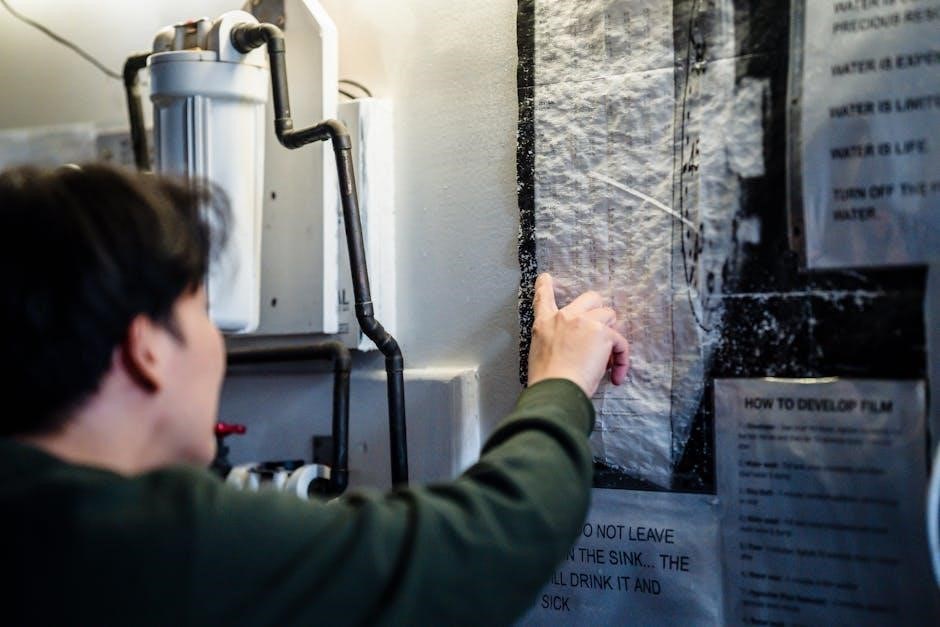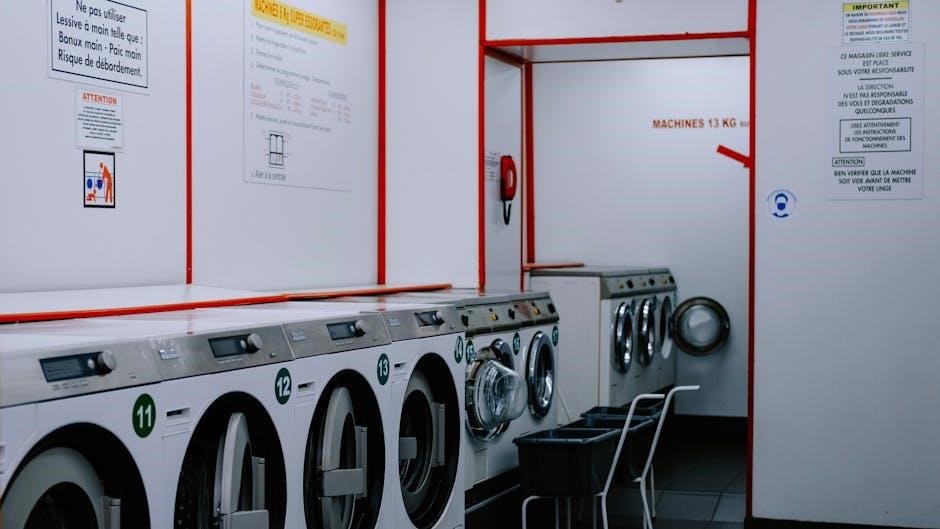pleurx catheter drainage instructions

The PleurX catheter is a medical device used to manage fluid accumulation in the chest or abdomen, enabling safe and effective drainage for patient comfort and care.
1.1 Overview of the PleurX Catheter System
The PleurX catheter system is a medical device designed for draining pleural effusions, providing relief from respiratory distress. It consists of a tunneled catheter, drainage bottle, and tubing, allowing patients to manage fluid drainage at home. The system is reusable, eliminating the need for repeated needle insertions, and features a one-way valve to prevent air entry. Its design promotes patient independence and reduces hospital visits.
1.2 Importance of Proper Drainage Instructions
Proper drainage instructions are crucial for patient safety and effective fluid removal. They minimize infection risks, ensure correct catheter handling, and prevent complications. Adhering to guidelines helps maintain catheter function and avoid issues like over-drainage or air entry. Accurate techniques ensure symptom relief and long-term catheter performance, while compliance with instructions promotes successful management of pleural effusions and reduces the need for medical interventions.

Preparation for Drainage
Preparation involves checking catheter patency, having a drainage kit ready, ensuring patient readiness, proper hand hygiene, and a clean workspace.
2.1 Gathering Necessary Supplies
To ensure a smooth drainage process, gather all required supplies, including the PleurX catheter kit, drainage bottle, tubing, patient education materials, sterile gloves, antiseptic solution, gauze pads, medical tape, and a sharps container. Optional items may include a drainage stand or labels for the drainage bottle. Organize everything within easy reach to maintain efficiency and sterility during the procedure.
2.2 Patient Preparation and Positioning
Position the patient upright in a comfortable chair or bed, slightly tilted to facilitate fluid drainage. Ensure the catheter site is accessible. Remove clothing that may obstruct access. Clean the area with antiseptic solution and dry thoroughly. Have the patient wash their hands if assisting. Use towels to absorb any spills. Ensure the patient is relaxed to ease the process.
2.3 Sterile Technique and Infection Prevention
Maintaining a sterile technique is crucial to prevent infections during PleurX catheter drainage. Always wear sterile gloves and use antiseptic solutions to clean the catheter site. Ensure all drainage materials are sterile and properly prepared. Regularly monitor the site for signs of infection, such as redness or swelling, and follow proper handwashing protocols. Secure the catheter and handle the drainage system to avoid contamination.

Drainage Procedure
The drainage procedure involves connecting the catheter to the drainage bottle, allowing fluid to flow out. Ensure the system remains sterile and properly sealed to prevent infection risks.
3.1 Connecting the Drainage Bottle
Connect the drainage bottle to the catheter by aligning the valve and securing it tightly. Ensure the connection is leak-proof and follow the manufacturer’s instructions for proper attachment. Open the valve slowly to allow fluid drainage. Always maintain sterility to prevent infection risks during the connection process. Refer to the provided guidelines for detailed steps.
3.2 Draining Fluid from the Catheter
Drain fluid by turning the valve on the PleurX catheter system slowly. Ensure the drainage bottle is below chest level to prevent backflow. Stop draining when fluid flow ceases or resistance is felt. Monitor the volume and consistency of the fluid drained. Record the amount and any unusual characteristics. If issues arise, consult a healthcare provider immediately.
3.3 Proper Handling of the Drainage Bottle
Always handle the drainage bottle with care to prevent contamination. Store it upright in a clean, dry place when not in use. Ensure the cap is securely tightened to avoid spills. Regularly check for any visible damage or leaks. Label the bottle with the date and contents for easy tracking. Dispose of it properly after use as instructed.

Post-Drainage Care
Post-drainage care involves cleaning the catheter site, dressing it with sterile materials, and securing the catheter properly to promote healing and prevent complications.
4.1 Cleaning the Catheter Site
Cleaning the catheter site is crucial to prevent infection. Use sterile saline solution to gently wipe the area around the catheter, ensuring no dirt or drainage remains. Apply an antibacterial ointment to reduce infection risk. Always wear gloves during cleaning and dispose of used materials properly. This step helps maintain a clean environment for healing and prevents complications.
4.2 Dressing the Catheter Insertion Site
After cleaning, apply a sterile dressing to the catheter insertion site. Use sterile gauze or a transparent dressing to cover the area, ensuring the catheter is securely anchored. Change the dressing daily or as needed, following sterile technique. This helps protect the site from infection and keeps the catheter stable, promoting healing and preventing complications.
4.3 Securing the Catheter
Secure the catheter using a catheter-securing device or sutures to prevent dislodgment. Anchor the catheter to the skin, ensuring it is snug but not overly tight. Regularly inspect the securement during dressing changes to ensure stability. Avoid pulling or tugging the catheter, as this could cause discomfort or misplacement. Proper securement helps maintain proper drainage and prevents complications.

Monitoring and Documentation
Monitor drainage volume and consistency daily, documenting any changes. Track for signs of complications and maintain a detailed log for healthcare provider reviews and adjustments.
5.1 Tracking Drainage Volume and Consistency
Monitor the amount of fluid drained daily, measuring in milliliters, and note its appearance, such as clear, cloudy, or blood-tinged. Document any changes from previous days, as this helps identify potential issues. Consistency in tracking aids healthcare providers in assessing treatment effectiveness and detecting complications early. Always notify your healthcare provider of significant changes or concerns.
5.2 Monitoring for Complications
Watch for signs of complications, such as increased pain, redness, or swelling at the catheter site, which may indicate infection. Monitor for shortness of breath, coughing, or chest pain, as these could signal blockages or improper drainage. Notify your healthcare provider immediately if you experience any unusual symptoms or suspect a complication. Early detection is critical for effective management.
5.3 Maintaining a Drainage Log
Keep a detailed record of drainage activities, including the date, time, and volume of fluid drained. Note the color, consistency, and any unusual odors of the fluid. Document any discomfort or symptoms experienced during drainage. This log helps track progress and provides valuable information for healthcare providers to ensure proper management and address potential issues promptly.

Safety Precautions
Always monitor drainage volume to avoid over-drainage. Use sterile technique to prevent infection. Ensure the catheter remains securely connected and avoid kinking the tubing to maintain proper flow.
6.1 Avoiding Over-Drainage
Monitor drainage volume closely to prevent excessive fluid removal, which can cause lung collapse. Stop drainage if resistance is felt or if the patient experiences discomfort. Use a timer and measure output to avoid exceeding recommended limits. Consult a healthcare provider if drainage volume suddenly increases or if concerns arise.
6.2 Preventing Air Entry into the Catheter
Ensure the catheter and drainage system remain closed except during drainage to prevent air entry. Keep the drainage bottle below chest level to avoid siphoning. Regularly inspect tubing for cracks or damage. Secure all connections tightly and educate the patient to avoid sudden movements that could introduce air into the catheter system.
6.3 Handling the Catheter and Drainage System
Always handle the catheter and drainage system with clean gloves to minimize contamination. Avoid kinking or stretching the tubing, as this can cause damage. Keep the system securely attached to the patient’s body to prevent accidental dislodgement. Regularly inspect the tubing and connectors for signs of wear or cracks. Store the drainage bottle in a clean, dry place when not in use.
Troubleshooting Common Issues
This section addresses common challenges encountered during PleurX catheter drainage, such as blockages, leaks, or discomfort, ensuring timely resolution to maintain effective and safe drainage.
7.1 Resolving Blockages in the Catheter
If drainage slows or stops, check for blockages. Flush the catheter gently with saline solution as instructed. Ensure no kinks are present in the tubing. If blockage persists, consult your healthcare provider for further guidance to restore proper flow and prevent complications.
7.2 Managing Leaks or Disconnections
Immediately inspect the catheter and tubing for any leaks or disconnections. Secure all connections tightly and ensure the catheter is properly anchored. If a leak persists, clamp the catheter distal to the leak and contact a healthcare provider promptly. Document the incident and any symptoms for further evaluation and guidance.
7.3 Dealing with Pain or Discomfort
If pain or discomfort occurs during drainage, stop the procedure immediately. Consult a healthcare provider for guidance. Use pain relief medications as prescribed. Ensure proper catheter positioning and avoid kinking the tubing. Monitor for severe pain, shortness of breath, or dizziness, as these may indicate complications. Document symptoms and report them to your healthcare team promptly;

Catheter Maintenance
Regular cleaning, inspections, and securement of the catheter are essential to prevent complications. Ensure proper handling and timely replacement of supplies to maintain functionality and hygiene.
8.1 Routine Cleaning of the Catheter
Regular cleaning of the PleurX catheter is crucial to prevent infections and maintain patency. Use sterile saline solution to flush the catheter as prescribed, typically after each drainage. Gently clean the catheter insertion site with antimicrobial soap and water, then dry thoroughly. Inspect for blockages, kinks, or signs of wear. Proper technique ensures safety and effectiveness.
8.2 Replacement of Drainage Supplies
Replace drainage supplies every 24-48 hours or as needed. Use sterile supplies to minimize infection risk. Disconnect the old drainage bottle, cap the catheter, and dispose of the used bottle properly. Connect the new sterile bottle securely, ensuring no air enters the system. Always follow manufacturer guidelines for replacement to maintain safety and functionality.
- Inspect supplies for damage before use.
- Ensure all connections are secure to prevent leaks.
8.3 Inspecting the Catheter for Damage
Regularly inspect the catheter for kinks, cracks, or disconnections. Check the tubing and connections for signs of wear or damage. Ensure the catheter is securely in place and not leaking. Inspect the drainage system daily for blockages or defects. Address any issues promptly to maintain proper function and prevent complications.
- Examine the catheter tubing for visible damage.
- Check all connections for tightness and integrity.
- Consult manufacturer guidelines for inspection frequency.
Patient Education and Empowerment
Patient education is crucial for safe and effective catheter drainage. Clear communication and comprehensive resources empower patients to manage their care confidently and independently.
- Understanding the drainage process.
- Recognizing normal and abnormal signs.
- Adhering to proper hygiene and safety guidelines.
9.1 Understanding the Drainage Process
Understanding the drainage process involves connecting the PleurX catheter to the drainage bottle, allowing fluid to flow out naturally. Patients should learn to drain fluid gradually, avoiding air entry, and secure the system properly. This knowledge enables safe and confident management of pleural effusion, promoting independence and effective fluid drainage.
9.2 Recognizing Normal and Abnormal Signs
Recognizing normal signs, such as smooth fluid drainage and symptom relief, is crucial. Abnormal signs include redness, swelling, discharge at the catheter site, slow or stopped drainage, increased pain, difficulty breathing, or fever. It’s important to contact your healthcare provider promptly for assistance if you experience any of these signs.
9.3 Importance of Adhering to Instructions
Adhering to instructions ensures safe and effective drainage, preventing complications like infections or catheter blockages. Proper technique maintains catheter function and reduces risks. Following guidelines helps avoid errors that could lead to fluid leakage or system damage; Compliance promotes better patient outcomes and supports long-term independence in managing pleural drainage.
Proper drainage using the PleurX catheter ensures safety and effectiveness, improving patient outcomes. Adherence to instructions is crucial for preventing complications and maintaining catheter functionality.
10.1 Summary of Key Points
The PleurX catheter drainage process emphasizes safety, effectiveness, and patient empowerment, requiring adherence to preparation, sterile technique, proper drainage, and post-care routines. Monitoring, troubleshooting, and regular maintenance are vital for optimal outcomes. Patient education and recognizing when to seek medical help ensure a successful experience.
10.2 Encouraging Patient Compliance
Encouraging patient compliance is crucial for effective PleurX catheter drainage. Clear communication about the procedure’s importance and benefits helps patients adhere to instructions. Providing easy-to-follow guides and emphasizing the role of hygiene can enhance adherence. Involving a support person and tracking progress may also improve compliance, ensuring safety and optimal outcomes.

Resources and References
Access manufacturer guidelines, instructional videos, and healthcare provider contact information for comprehensive support. These resources ensure accurate procedure understanding and troubleshooting, promoting safe drainage practices.
11.1 Recommended instructional Videos
Recommended instructional videos provide step-by-step guidance on PleurX catheter drainage. These videos are often available on the manufacturer’s website or platforms like YouTube. They cover proper technique, safety measures, and troubleshooting. Look for videos endorsed by healthcare professionals or manufacturers to ensure accuracy. Watching these can help patients and caregivers perform drainage confidently and safely at home.
11.2 Manufacturer Guidelines and Manuals
Manufacturer guidelines and manuals for PleurX catheter drainage are essential resources. They provide detailed, evidence-based instructions for safe and effective use. These materials include step-by-step procedures, troubleshooting tips, and safety precautions. Always refer to the official documentation before performing drainage. The guidelines are designed to align with best practices and are regularly updated by the manufacturer.
11.3 Healthcare Provider Contact Information
Keeping healthcare provider contact information handy is crucial for PleurX catheter users. This ensures quick access to professional guidance. Include phone numbers, email, and office hours. Contact your provider for concerns, complications, or unclear instructions. This information is typically provided during initial setup or training. Always have it readily available for emergencies or routine questions.

Final Thoughts on Safe and Effective Drainage
Safe and effective PleurX catheter drainage requires adherence to guidelines, proper monitoring, and patient empowerment. Always follow best practices to ensure optimal outcomes and minimize complications.
12.1 Emphasizing Patient Safety
Patient safety is paramount during PleurX catheter drainage. Always follow guidelines to minimize risks of infection, injury, or complications. Use sterile techniques, secure the catheter properly, and monitor for signs of distress. Regular inspections and adherence to drainage limits are critical to ensure safe and effective outcomes for patients using the PleurX system.
12.2 Promoting Independence in Drainage
Promoting independence in drainage empowers patients to manage their PleurX catheter confidently. Provide clear instructions and demonstrations, ensuring they understand the process. Encourage self-management by organizing supplies and scheduling drainage sessions. Foster confidence through education and support, allowing patients to perform drainage safely and effectively on their own, enhancing their quality of life and autonomy.
12.3 Encouraging Open Communication with Healthcare Providers
Open communication with healthcare providers is crucial for effective catheter drainage management. Encourage patients to ask questions, report concerns, and share observations about drainage volume or symptoms. Regular follow-ups ensure personalized care and address potential issues early. This collaborative approach fosters trust, improves outcomes, and empowers patients to actively participate in their healthcare journey.

When to Seek Medical Help
Seek immediate medical help if experiencing severe chest pain, difficulty breathing, high fever, or signs of infection. Prompt attention ensures complications are managed effectively and safely.
13.1 Recognizing Emergency Situations
Seek immediate medical help if you experience sudden severe chest pain, difficulty breathing, or rapid heartbeat. Other emergencies include heavy bleeding, catheter dislodgment, or signs of infection like redness, swelling, or pus at the site. Fever above 101.5°F or sudden increased drainage also requires urgent attention to prevent serious complications.
13.2 Signs of Infection or Complications
Watch for redness, swelling, or pus at the catheter site, which may indicate infection. Other signs include fever, chills, or drainage that is cloudy, foul-smelling, or discolored. Pain or increased warmth around the site also warrants attention. If fluid stops draining or the catheter becomes dislodged, contact your healthcare provider immediately to address potential complications.
13.3 Difficulty with Drainage Process
If the catheter is blocked, kinked, or not draining properly, check for obstructions and ensure the tubing is not twisted. If fluid flow remains restricted, gently flush the catheter with saline solution as instructed. Contact your healthcare provider if issues persist, as professional assistance may be needed to resolve the problem and ensure proper drainage.
